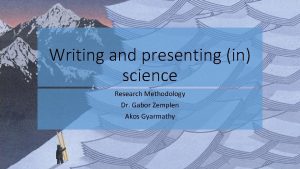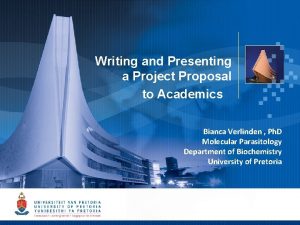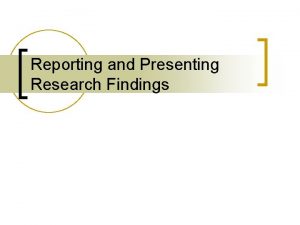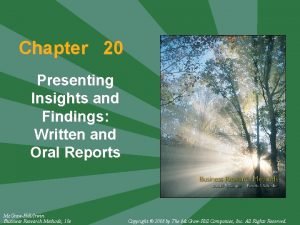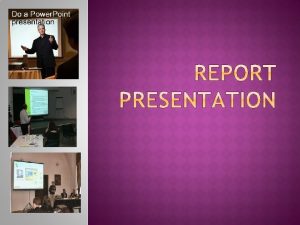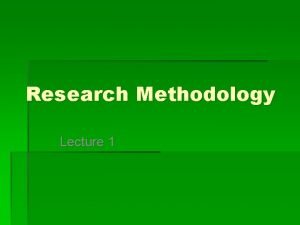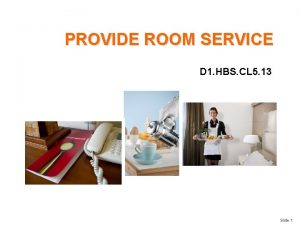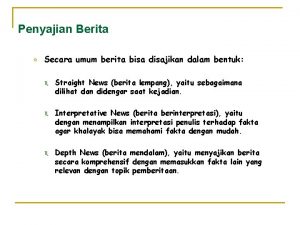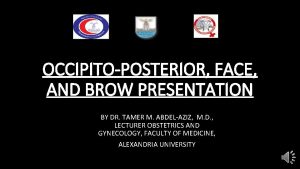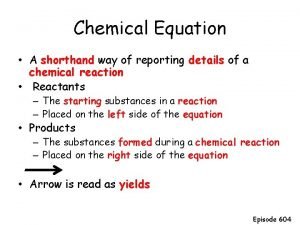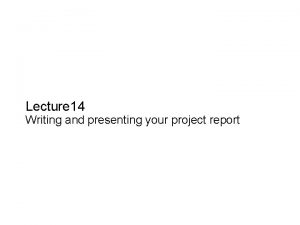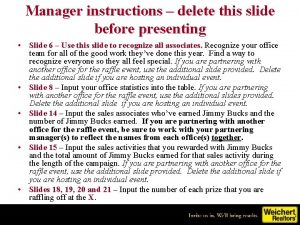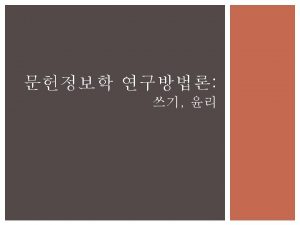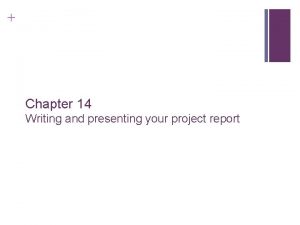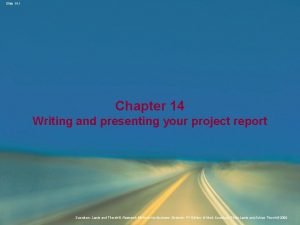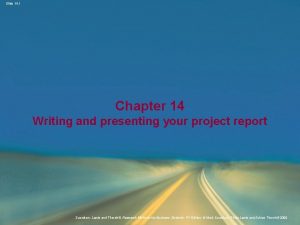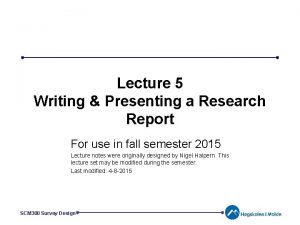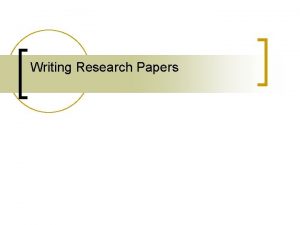Slide 14 1 Writing and presenting Research Lecture

















- Slides: 17

Slide 14. 1 Writing and presenting Research Lecture 29 th Saunders, Lewis and Thornhill, Research Methods for Business Students , 5 th Edition, © Mark Saunders, Philip Lewis and Adrian Thornhill 2009

Slide 14. 2 RECAP Saunders, Lewis and Thornhill, Research Methods for Business Students , 5 th Edition, © Mark Saunders, Philip Lewis and Adrian Thornhill 2009

Slide 14. 3 Getting started with writing Practical hints • • Create time for your writing Write when your mind is fresh Find a regular writing place Set goals and achieve them Use word processing Generate a plan for the report Finish each writing session on a high point Get friends to read and comment on your work Saunders, Lewis and Thornhill, Research Methods for Business Students , 5 th Edition, © Mark Saunders, Philip Lewis and Adrian Thornhill 2009

Slide 14. 4 Structuring your research report Suggested structure • • • Abstract Introduction Literature review Method Results Discussion Conclusions References Appendices Saunders, Lewis and Thornhill, Research Methods for Business Students , 5 th Edition, © Mark Saunders, Philip Lewis and Adrian Thornhill 2009

Slide 14. 5 Writing for different audiences Key differences between an ‘Academic’ report and a ‘Consultancy’ or ‘Management’ report The academic report: • Tends to be longer • Will be marked and graded • Will contain contextual descriptions The consultancy report: • Has less focus on the development of theory • Contains recommendations relating to the organisation’s business Saunders, Lewis and Thornhill, Research Methods for Business Students , 5 th Edition, © Mark Saunders, Philip Lewis and Adrian Thornhill 2009

Slide 14. 6 Research dissertation/report structure 1. The abstract Four short paragraphs that answer the questions: 1. What were my research questions and why were they important? (Focus on the issue of research work) 2. How did I go about answering the research questions? (Methodology, study design and data) 3. What did I find out in response to these questions? (Main results or findings of the study) 4. What conclusions can be drawn? (must be sharp conclusion) Adapted from Saunders et al. (2009) Saunders, Lewis and Thornhill, Research Methods for Business Students , 5 th Edition, © Mark Saunders, Philip Lewis and Adrian Thornhill 2009

Slide 14. 7 Report structure 2. Introduction • The research questions(s) and a clear statement of research objectives • Brief background a guide to the storyline 3. Literature review - purpose • To set your study in the wider context • To show your study supplements existing work Saunders, Lewis and Thornhill, Research Methods for Business Students , 5 th Edition, © Mark Saunders, Philip Lewis and Adrian Thornhill 2009

Slide 14. 8 Report structure 4. Methodology Participants • How many? • How were they selected? • What were their characteristics? • How were refusals/non-returns handled? Materials • What tests/scales/interview or observation • schedules/questionnaires were used? • How were purpose-made instruments developed? • How were the resulting data analyzed? Saunders, Lewis and Thornhill, Research Methods for Business Students , 5 th Edition, © Mark Saunders, Philip Lewis and Adrian Thornhill 2009

Slide 14. 9 Report structure Methodology Procedures • What were the characteristics of the interviewers and observers, and how were they trained? • How valid and reliable do you think the procedures were? • What instructions were given to participants? • How many interviews/observations/questionnaires were there; how long did they last; where did they take place? • When was the research carried out? Saunders, Lewis and Thornhill, Research Methods for Business Students , 5 th Edition, © Mark Saunders, Philip Lewis and Adrian Thornhill 2009

Slide 14. 10 Report structure 5. Results chapter(s) - purpose • To report the facts your research discovered • To support the facts with participants/previous research findings quotes from 6. Discussion chapter- purpose • To interpret results and relate the findings to the original research goals and objectives • To indicate implications of the research Saunders, Lewis and Thornhill, Research Methods for Business Students , 5 th Edition, © Mark Saunders, Philip Lewis and Adrian Thornhill 2009

Slide 14. 11 Report structure Using a matrix in the planning of the content for the results and conclusions chapters Saunders et al. (2009) Figure 14. 1 Using a matrix in the planning of the content for the results and conclusions chapters Saunders, Lewis and Thornhill, Research Methods for Business Students , 5 th Edition, © Mark Saunders, Philip Lewis and Adrian Thornhill 2009

Slide 14. 12 Report structure 7. Conclusion chapter – purpose • • To answer the research question(s) To meet the research objectives To consider the findings To present any contributions to the topic displayed in the literature • To reflect on any implications for future research Saunders, Lewis and Thornhill, Research Methods for Business Students , 5 th Edition, © Mark Saunders, Philip Lewis and Adrian Thornhill 2009

Slide 14. 13 Report structure 8. References • Use a convention that is accepted by your university (e. g. Harvard, APA, MLA, Chicago) • Cite all sources referred to in the text • Check all citations to prevent plagiarism 9. Appendices • Include only essential supporting material • Include copies of interview schedules • Keep appendices to a minimum Saunders, Lewis and Thornhill, Research Methods for Business Students , 5 th Edition, © Mark Saunders, Philip Lewis and Adrian Thornhill 2009

Slide 14. 14 Organising the report content Main points to consider • Choosing the title • Telling a clear story • Helping the reader by. Dividing your work Previewing and summarising chapters Using suitables and graphics Writing in a suitable style Saunders, Lewis and Thornhill, Research Methods for Business Students , 5 th Edition, © Mark Saunders, Philip Lewis and Adrian Thornhill 2009

Slide 14. 15 Writing style Key points: • Clarity and simplicity – avoid jargon • Checking grammar and spelling • Preserving anonymity • Regularly revising each draft Saunders, Lewis and Thornhill, Research Methods for Business Students , 5 th Edition, © Mark Saunders, Philip Lewis and Adrian Thornhill 2009

Slide 14. 16 Summary • Writing is a creative process and a powerful way to clarifying your thinking • A project report needs a clear structure that helps to develop the storyline • All the information should be readily accessible to the reader Saunders, Lewis and Thornhill, Research Methods for Business Students , 5 th Edition, © Mark Saunders, Philip Lewis and Adrian Thornhill 2009

Slide 14. 17 Summary • Use a clear writing style free and check for spelling and grammatical errors • Be prepared to rewrite the first draft several times • Remember to check the assessment criteria Saunders, Lewis and Thornhill, Research Methods for Business Students , 5 th Edition, © Mark Saunders, Philip Lewis and Adrian Thornhill 2009
 Basic dance steps in heel and toe polka
Basic dance steps in heel and toe polka Ocar structure
Ocar structure Font sans
Font sans Presenting research findings
Presenting research findings 01:640:244 lecture notes - lecture 15: plat, idah, farad
01:640:244 lecture notes - lecture 15: plat, idah, farad Types of interior display
Types of interior display Presenting insights and findings using written reports
Presenting insights and findings using written reports Dear ladies and gentlemen
Dear ladies and gentlemen X^2 + 25 factored
X^2 + 25 factored Research methods notes
Research methods notes Slidetodoc
Slidetodoc Research meaning
Research meaning How to set-up trays and trolleys at room service?
How to set-up trays and trolleys at room service? Name of presenting organization
Name of presenting organization Different methods of presenting information
Different methods of presenting information Teknik penyajian berita
Teknik penyajian berita Fundal grip
Fundal grip Shorthand way of representing chemical reaction
Shorthand way of representing chemical reaction

